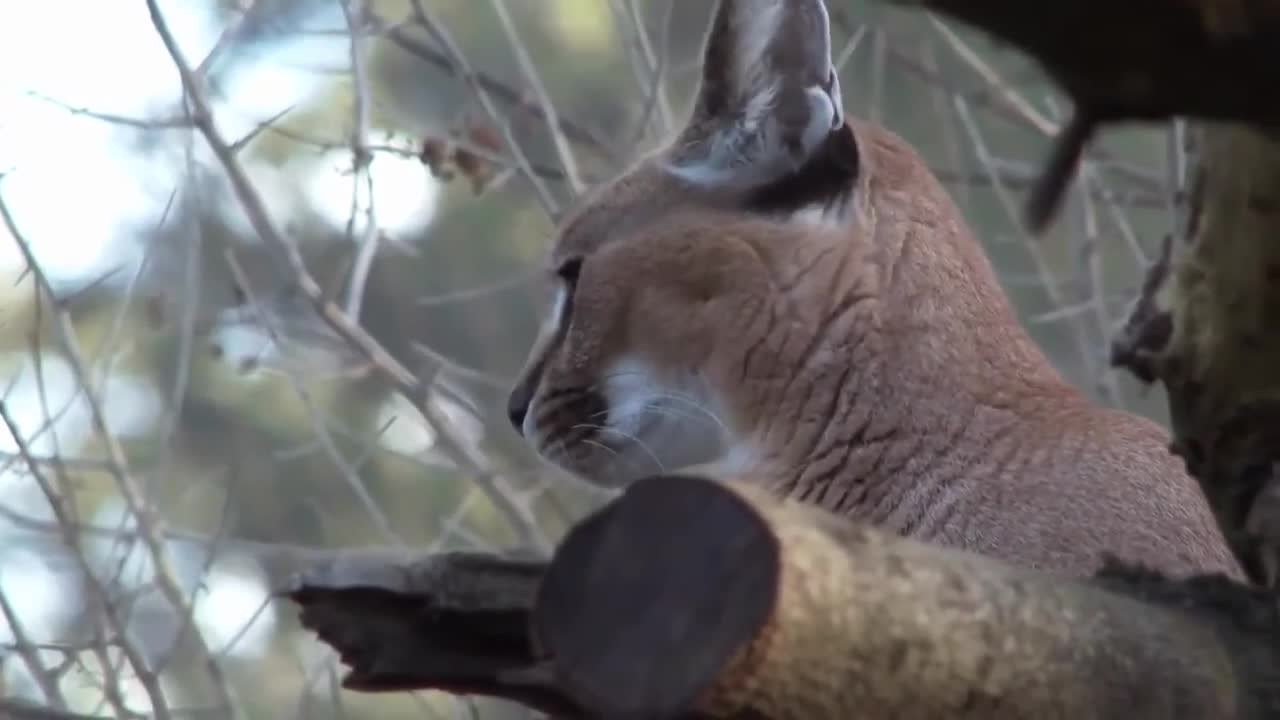Premium Only Content

The Canada Lynx Behavior
The Canada lynx is a medium-sized North American cat that ranges across Alaska, Canada and many of the contiguous United States. It is characterized by its long, dense fur, triangular ears with black tufts at the tips, and broad, snowshoe-like paws. Similar to the bobcat, the hindlimbs are longer than the forelimbs, so that the back slopes downward to the front. The Canada lynx stands 48–56 cm tall at the shoulder and weighs between 5 and 17 kg. The lynx is a good swimmer and an agile climber. The Canada lynx was first described by Robert Kerr in 1792. Three subspecies have been proposed, but their validity is doubted.
A specialist predator, the Canada lynx depends heavily on snowshoe hares for food. This leads to a prey-predator cycle, as Canada lynxes respond to the cyclic rises and falls in snowshoe hare populations over the years in Alaska and central Canada. When hares are scarce lynxes tend to move to areas with more hares and tend not to produce litters, and as the numbers of the hare increase, so do the populations of the lynx. The Canada lynx hunts mainly around twilight, or at night, when snowshoe hares tend to be active. The lynx waits for the hare on specific trails or in "ambush beds", then pounces on it and kills it by a bite on its head, throat or the nape of its neck. Individuals, particularly of the same sex, tend to avoid each other, forming "intra sexual" territories. The mating season is roughly a month long (from March to early April). After a gestation of two to three months, a litter of one to eight kittens is born. Offspring are weaned at 12 weeks.
-
 0:23
0:23
NewHampshire603
3 years agoCanada Goose Family
69 -
 1:45
1:45
Gary65
4 years ago $0.02 earnedCanada Geese goslings
36 -
 LIVE
LIVE
LFA TV
9 hours agoLFA TV ALL DAY STREAM - TUESDAY 6/17/25
6,031 watching -
 LIVE
LIVE
JULIE GREEN MINISTRIES
1 hour agoLIVE WITH JULIE
24,257 watching -
 LIVE
LIVE
Game On!
17 hours agoCan the Panthers Make HISTORY? Stanley Cup Final Game 6 Preview!
2,316 watching -
 27:11
27:11
DeVory Darkins
15 hours ago $3.76 earnedTrump drops CHILLING WARNING on blue cities Democrats make FATAL MISTAKE
8.09K46 -
 3:00
3:00
The Official Steve Harvey
18 hours ago $0.89 earnedThe Books That Changed My Life: Lessons from Steve Harvey on Purpose, Growth & Starting Now
7.89K4 -
 3:01
3:01
Rena Malik, M.D.
23 hours ago $0.74 earnedWhat to do if it gets stuck?! (it happens!)
9.63K4 -
 LIVE
LIVE
PudgeTV
1 hour ago🟠 Mafia II: Definitive Edition | Live Playthrough | Gaming on Rumble
78 watching -
 17:14
17:14
Lacey Mae ASMR
13 hours ago $1.09 earnedMy Top 10 ASMR Triggers! (As an ASMRtist)
12.6K1